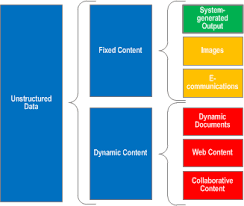Exploring Archiving Solutions for Digital Preservation
In today’s digital age, the need for effective archiving solutions has never been more critical. With vast amounts of digital content being created and shared every day, ensuring the long-term preservation and accessibility of this information is a significant challenge.
Archiving solutions play a crucial role in safeguarding digital assets from loss, corruption, or obsolescence. These solutions encompass a range of technologies and strategies aimed at capturing, storing, and managing digital content in a sustainable and secure manner.
The Importance of Archiving Solutions
Archiving solutions are essential for organizations, institutions, and individuals looking to preserve their digital heritage. By implementing robust archiving practices, they can ensure that valuable information remains intact and accessible for future generations.
Furthermore, archiving solutions help mitigate the risks associated with data loss or degradation. By creating multiple copies of digital assets and storing them in diverse locations, organizations can protect against unforeseen events such as hardware failures, cyberattacks, or natural disasters.
Key Features of Archiving Solutions
Effective archiving solutions typically include features such as:
- Data Encryption: Ensuring that sensitive information is protected from unauthorized access.
- Metadata Management: Organizing and describing digital content to facilitate search and retrieval.
- Version Control: Tracking changes to digital assets over time to maintain integrity.
- Scalability: Accommodating the growth of digital collections without compromising performance.
The Future of Archiving Solutions
As technology continues to evolve, archiving solutions must adapt to meet new challenges and opportunities. Emerging trends such as artificial intelligence, blockchain technology, and cloud computing are reshaping the landscape of digital preservation.
The future of archiving solutions lies in embracing innovation while upholding core principles of authenticity, integrity, and accessibility. By staying ahead of technological advancements and best practices in archiving, organizations can safeguard their digital assets for generations to come.
In conclusion, archiving solutions are indispensable tools for preserving our digital heritage in an ever-changing world. By investing in robust archiving practices and leveraging cutting-edge technologies, we can ensure that our valuable information endures the test of time.
6 Essential Tips for Effective Data Archiving Solutions
- Regularly assess and update your archiving policies to ensure they align with business needs.
- Implement a tiered archiving system to prioritize important data for quicker retrieval.
- Utilize compression and deduplication techniques to optimize storage space usage.
- Encrypt sensitive archived data to maintain security and compliance with regulations.
- Establish clear naming conventions and folder structures for organized archiving.
- Regularly test the integrity of archived data through validation processes.
Regularly assess and update your archiving policies to ensure they align with business needs.
Regularly assessing and updating your archiving policies is essential to ensure they align with your business needs. As organizations evolve and technology advances, it is crucial to review and adjust archiving strategies to meet changing requirements and priorities. By staying proactive in evaluating your archiving policies, you can optimize the management of digital assets, enhance data security, and adapt to new compliance regulations. Keeping your archiving policies up-to-date enables you to maintain efficiency, relevance, and effectiveness in preserving critical information for the long term.
Implement a tiered archiving system to prioritize important data for quicker retrieval.
Implementing a tiered archiving system is a smart strategy to enhance the efficiency of digital preservation efforts. By categorizing data based on importance and access frequency, organizations can prioritize crucial information for quicker retrieval while optimizing storage resources. This approach ensures that essential data remains readily available when needed, streamlining workflows and enhancing overall productivity. Tiered archiving systems offer a practical solution to managing large volumes of digital content effectively, striking a balance between accessibility and resource allocation for sustainable archiving practices.
Utilize compression and deduplication techniques to optimize storage space usage.
To optimize storage space usage in archiving solutions, it is recommended to incorporate compression and deduplication techniques. Compression reduces the size of files by encoding data in a more efficient manner, thereby saving storage space without compromising data integrity. Deduplication eliminates redundant data by identifying and storing only unique instances of information, further reducing storage requirements. By leveraging these techniques effectively, organizations can maximize their storage capacity while maintaining accessibility to archived content.
Encrypt sensitive archived data to maintain security and compliance with regulations.
To enhance security and comply with regulations, it is crucial to encrypt sensitive archived data. Encryption adds an extra layer of protection to safeguard confidential information from unauthorized access or breaches. By implementing encryption protocols for archived data, organizations can ensure that sensitive content remains secure and confidential, mitigating the risk of data leaks or compliance violations. Encrypting sensitive archived data is a proactive measure that reinforces security measures and demonstrates a commitment to maintaining the integrity and confidentiality of stored information.
Establish clear naming conventions and folder structures for organized archiving.
Establishing clear naming conventions and folder structures is a fundamental tip for organized archiving solutions. By defining consistent naming rules and logical folder hierarchies, users can easily locate and retrieve archived content efficiently. Clear naming conventions help standardize file names, making it simpler to identify the content of each file at a glance. Additionally, structured folder arrangements provide a systematic approach to organizing digital assets, ensuring that information is stored in a logical and intuitive manner. This practice not only enhances accessibility but also contributes to the overall effectiveness of archiving solutions by promoting orderliness and ease of management.
Regularly test the integrity of archived data through validation processes.
Regularly testing the integrity of archived data through validation processes is a crucial step in ensuring the reliability and longevity of digital archives. By routinely verifying the accuracy and completeness of stored data, organizations can identify and address any potential issues or corruption early on, thus preventing data loss or degradation. Validation processes help maintain the trustworthiness of archived information, providing assurance that the data remains intact and accessible for future use. This proactive approach to data validation is essential for upholding the quality and authenticity of archived content over time.

